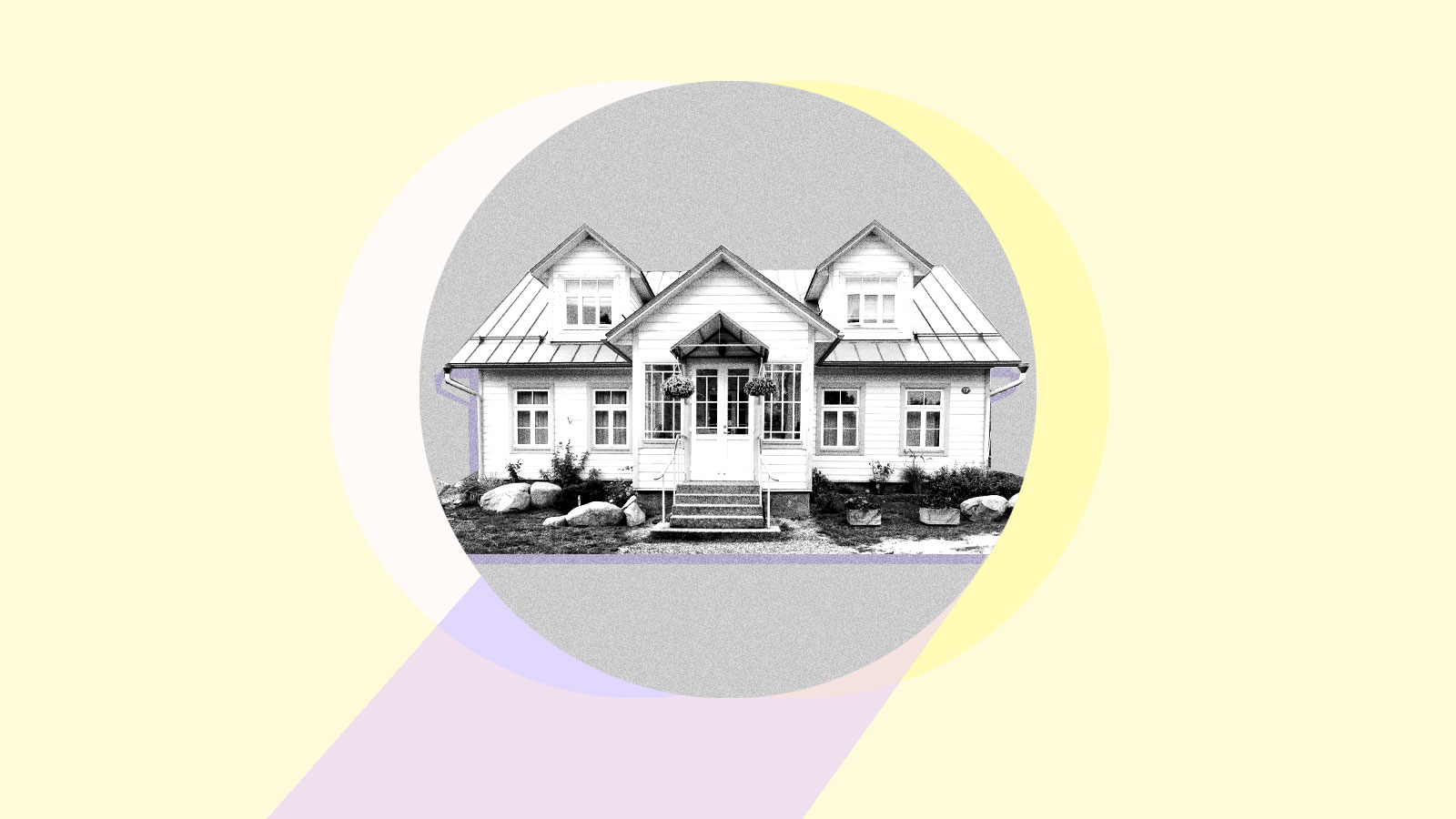This essay was first published in our semi-weekly newsletter, Climate in the Time of Coronavirus, which you can subscribe to here.
My mother recently began painting houses. Little homes; on canvas, I mean. It’d be an unremarkable act for an artist, but I don’t think I’ve ever seen her paint a house before. When I texted her this morning, she wrote back that she’d finished 30 of them.
Like many of us, she is indoors. The new paintings offer a view from outside. From this perspective, we see glimpses of the landscapes on which they sit, along with the soft, quiet trappings of the built environment: doors, window glass, boxy garages, rooflines, eaves. My mother’s houses appear still, maybe even empty. And then we notice that in all their color, the homes are vibrating, like atoms.
We’re in here, after all. From my perch on the back deck of my house, I can see the neighbor kids living what is perhaps the dream of temporary homeschool, bouncing around outside instead of studying participles or numerators or exoskeletons or whatever it is they’re supposed to be learning about. The bouncing is literal: The younger child is on a small exercise trampoline; the older is, improbably, in a small bounce castle — apparently the kind of thing you can order online in 2020, even on lockdown. Past the bouncers, a lone car passes through downtown Tacoma toward the fingers of the port. To my left, in the jungly yard, plum trees, resolute peonies, the unobjectionable but tailless cat that shows up sometimes looking like an unfinished sketch.
I’ve been hearing the world “surreal” get bandied about lately to describe the present reality. The cat doesn’t help. I think what I most like about my mother’s houses is the manner in which they push back against this impulse. While much of her other work is gestural and frenetic — symmetries are broken, geometry comes off as a charming suggestion — the pandemic has brought her lines more parallel. The house-form is basically a rectangle wearing a triangle hat.
The grounding nature of these shapes, coupled with the vibrancy of the homes they portray, offers a gentle reminder that in forced order, there can be a great deal of life. It’s an answer to the instability outside. To the extent that pandemics interrupt us and our daily rhythms, they are chaotic. The unpredictability of climate change’s wrath works similarly.
You might not be able to see the bounce castle from the street, but we’re still living here, at home. And when we flatten the climate curve, with all the calculated disruption it will take, we’ll be living, then, too.
My mom’s been keeping social distance for longer than many of us. When my stepfather passed away last May, the peace and closure and loneliness that followed wrote an instruction manual for lockdown that she’d scour and dogear by the time the shelter-in-place order came down. With her head start, she’s had time to remember what it means to be at home. She’s just started painting neighborhoods. As far as I know, the houses all have bouncing kids in the back.



